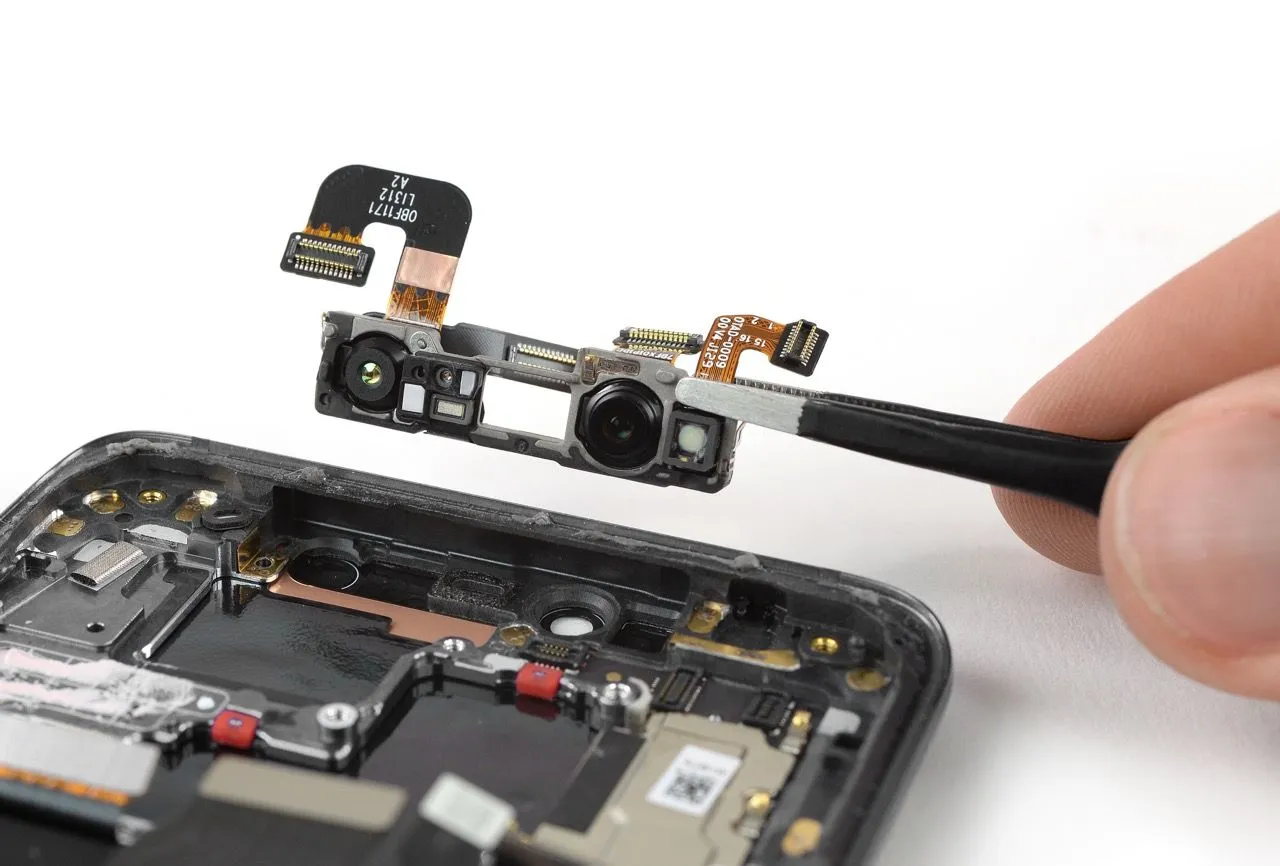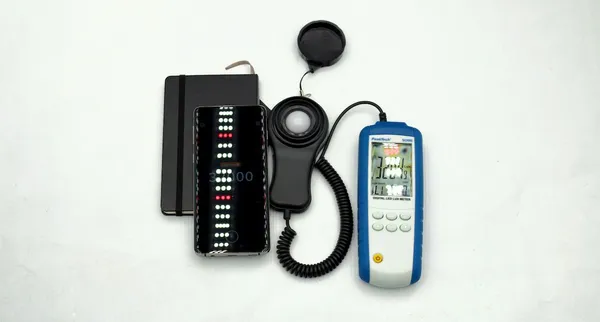
Auto-Translate
Different Light Intensity Sensors
This guide explains the two different light intensity sensors used by Photone (Camera & ALS)

There are two methods to measure light on a smartphone. The first and most common method is using the built-in ambient light sensor (ALS). Since these sensors are known to be inaccurate (more about this below), Photone supports a superior measurement method using the front camera. This method allows for more accurate and sensitive measurements. However, it's only supported on some devices.
Confused? Check the common questions at the end of this article or read along to learn more about the two different types of sensors. Be aware! This will get a bit technical 🤓
Ambient Light Sensor (ALS)
An ambient light sensor (ALS) is built into most smartphones to adjust the screen brightness depending on the ambient light. Thanks to this sensor, your screen automatically gets brighter when your device faces bright light and allows you to actually see something. On the other hand, the screen will be dimmed when it's dark so it doesn't blind you when checking your phone at night. The ALS is usually combined with a proximity sensor, used to block the screen when you hold the device to your ear.
On Android devices, every app can access and display the sensor's current reading which should (in theory) be in the unit of lux. Some apps even transform this value into other light intensity measurements such as PPFD. So what's exactly the issue with this method?
ALS Are Terrible Light Meters
As mentioned above, the only function the ALS have in a device is to automatically adjust screen brightness. They are by far not light meters.
Here are the most important reasons, why you'll probably get an inaccurate measurement, with an app that uses the ALS as a light intensity sensor:
- Cheap part: The ALS is not an important part of a smartphone. Thus, manufacturers opt for an inexpensive part that just gets the job done.
- No calibration: The sensor is not calibrated in a way that a light meter would require. As dimming the screen isn’t a precise task, smartphone manufacturers don’t spend more time and money than necessary on the sensor and its calibration. This means that two devices will measure differently, even though they have the same sensor built in.
- The spectral sensitivity is not accurately matched to any standard: Meaning the sensor will weigh some wavelengths (or colors) of light too much and others too little. This will lead to inaccurate measurements for PAR (PFFD) or illuminance (lux/fc).
- An ALS doesn’t measure all of the light: Since the ALS is deeply nested in the device, it won't detect light coming from an angle (e.g. light that gets reflected by the walls and still reaches the plant). To accurately measure light from all directions, a light meter requires cosine correction.
- ALS do not always behave linearly: This means for example, that doubling the light intensity doesn't double the measurement. This is an issue, even when just comparing relative measurements.
- Every device comes with a different type of ALS: Meaning if an app seems to work fine on one device, it doesn't mean it's working fine on another device. Even if the devices have the same model and brand, they could still house a different ALS.
- And there's much more: But for now, let's spare you the details.
Due to all of these issues, a light intensity measurement with an ALS will most likely be erroneous. Handle such measurements with great care. If your device doesn't support the camera as a light intensity sensor and it seems that your measurements are off, use Photone's calibration options to make the best out of it:

Front Camera
The most accurate and reliable way to measure light intensity with a smartphone is to use the Photone app with the camera as a light sensor. If you're using a diffuser as instructed by the app, Photone will be as accurate as best-in-class handheld light meters. Here's why:
- High-end technology: The camera module is one of the most important and expensive component of a smartphone. To make excellent images, smartphone cameras incorporate high quality sensors that require rigorous testing to ensure consistency and quality across millions of units.
- Science-grade calibration: Each supported device model comes with a default calibration that was created in an optical laboratory by measuring the camera's sensor and analyzing the response of each individual pixel.
- Defined spectral sensitivity: The measurement algorithm adjusts the camera's spectral sensitivity to reduce the spectral error for each measurement type (e.g. PAR/PPFD, illuminance). This means that the different colors of light (i.e. wavelengths) will be weighted as needed for the selected type of intensity measurement as defined by the respective standard. The remaining spectral error will be removed by choosing the correct light source setting.
- Cosine correction: Since the camera is not hidden within the device (unlike the ALS) it can detect light coming from all directions, especially when paired with the right diffuser.
- Perfect linearity: Photone will provide precise and consistent measurements without deviations or irregularities. This is thanks to a process called "linearity correction" which is done for each camera sensor in an optical lab. The linearity correction is included in the default calibration for each device.
- High sensitivity: With its millions of tiny photocells, the camera sensor is able to measure light much more sensitively and in the highest resolution. The camera is not without reason one of the most expensive parts in your device.
- Wide measurement range: From the faint glow of moonlight to intensities surpassing full sunlight, Photone can measure the full range with stunning accuracy without any limitations.
Common Questions
How do I know which sensor I'm using?
You can see this by opening settings (⚙️-icon), scrolling down to Danger Zone and look the "Light Sensor" setting. If you don't have this setting, you're using the ALS.
Do I need a diffuser?
Only if your device uses the camera as a light intensity sensor. Don't worry - the app will tell you if you're incorrectly using a diffuser or if you need one. To learn what a diffuser is and how to get one, read the diffuser guide.
Why doesn't the app use the back camera?
Photone is using the front (selfie) camera to measure the light that falls onto your plants whilst allowing you to read the measurement. Using the rear (back) camera (i.e. filming your plants) would measure light reflected off your plants.
Why do some devices not support the camera as an intensity sensor?
For precise light measurements, Photone needs access to advanced camera features that aren't available on all Android devices. Particularly, some budget-friendly or older models may lack the necessary capabilities.
